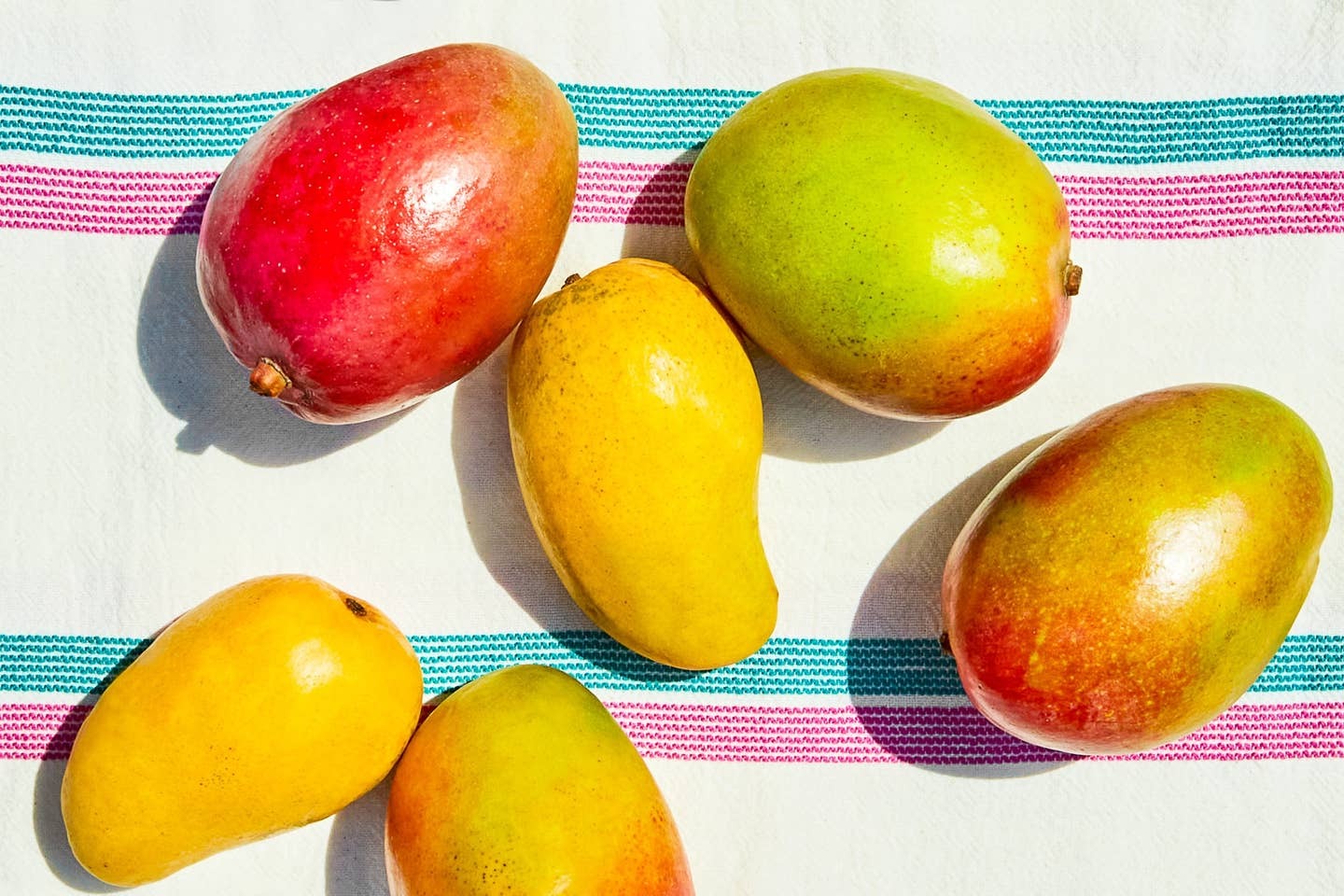
Mangoes are more than just a delicious tropical fruit; they hold a treasure chest of fascinating facts. Did you know that mangoes are the national fruit of India, Pakistan, and the Philippines? These juicy fruits have been cultivated for over 4,000 years, making them one of the oldest cultivated fruits. Mangoes come in various shapes, sizes, and colors, from green to yellow to red. A single mango can contain up to 20 different vitamins and minerals, making it a nutritional powerhouse. Whether you enjoy them fresh, dried, or in a smoothie, mangoes offer a burst of flavor and health benefits. Ready to dive into more mango magic? Let's peel back the layers and uncover 40 amazing facts about this beloved fruit!
Key Takeaways:
- Mangoes have a rich history, originating in South Asia and spreading worldwide over thousands of years, making them a beloved and culturally significant fruit.
- With over 1,000 varieties, mangoes offer not only delicious flavors but also nutritional benefits, cultural significance, and a fascinating presence in popular culture.
The Origin of Mangoes
Mangoes are beloved worldwide, but their journey to global fame began in specific regions. Let's explore where these delicious fruits come from.
- Mangoes originated in South Asia, specifically in the region between northwestern Myanmar, Bangladesh, and northeastern India.
- The mango tree, scientifically known as Mangifera indica, has been cultivated for over 4,000 years.
- Ancient Indian texts, such as the Vedas, mention mangoes, highlighting their long-standing cultural significance.
- Alexander the Great introduced mangoes to the Western world after his invasion of India in 327 BCE.
- Portuguese explorers brought mangoes to Africa and Brazil in the 16th century, spreading their cultivation further.
Mango Varieties
Mangoes come in many shapes, sizes, and flavors. Each variety has its unique characteristics.
- There are over 1,000 different varieties of mangoes grown worldwide.
- The Alphonso mango, also known as the "King of Mangoes," is renowned for its sweetness and rich flavor.
- Tommy Atkins is the most widely grown commercial variety in the United States, known for its long shelf life.
- Haden mangoes, originating from Florida, are popular for their vibrant color and sweet taste.
- Ataulfo mangoes, also called honey mangoes, are small, yellow, and have a creamy texture.
Nutritional Benefits
Mangoes are not just tasty; they are also packed with nutrients that benefit your health.
- A single cup of sliced mango provides 100% of your daily vitamin C needs.
- Mangoes are rich in vitamin A, which supports eye health and immune function.
- They contain dietary fiber, aiding in digestion and preventing constipation.
- Mangoes have antioxidants like quercetin, isoquercitrin, and astragalin, which help protect against cancer.
- The fruit is low in calories, making it a healthy snack option.
Cultural Significance
Mangoes hold a special place in various cultures around the world.
- In India, mango leaves are used in religious ceremonies and weddings for good luck.
- The mango is the national fruit of India, Pakistan, and the Philippines.
- In Hindu mythology, the mango is considered a symbol of love and fertility.
- The famous Indian festival, "Mango Festival," celebrates the fruit with various events and competitions.
- In Thailand, mango sticky rice is a popular dessert, showcasing the fruit's versatility in cuisine.
Mango in Cuisine
Mangoes are a versatile ingredient in many dishes, from savory to sweet.
- Mango chutney is a popular condiment in Indian cuisine, often served with curries.
- In Mexico, mangoes are enjoyed with chili powder, lime juice, and salt for a spicy-sweet treat.
- Mango lassi, a yogurt-based drink, is a refreshing beverage in Indian cuisine.
- Mango salsa pairs well with grilled fish or chicken, adding a tropical twist to the dish.
- Dried mangoes are a popular snack, especially in Southeast Asia.
Fun Facts About Mangoes
Mangoes have some quirky and interesting facts that might surprise you.
- The world’s heaviest mango, weighing 4.25 kg (9.36 lb), was grown in the Philippines in 2009.
- Mango trees can grow up to 100 feet tall and live for over 300 years.
- The sap of a mango tree can cause skin irritation in some people, similar to poison ivy.
- Mangoes are related to cashews and pistachios, all belonging to the Anacardiaceae family.
- In the 18th century, the word "mango" was used as a verb meaning "to pickle," due to the fruit's use in pickling.
Mango Production and Trade
Mangoes are a significant agricultural product, with many countries involved in their production and trade.
- India is the largest producer of mangoes, accounting for about 40% of the world's supply.
- Mexico is the largest exporter of mangoes, sending millions of tons to the United States and Europe annually.
- The global mango market is valued at over $50 billion, reflecting the fruit's economic importance.
- Mangoes are typically harvested by hand to prevent damage to the delicate fruit.
- The peak mango season varies by region, but generally falls between May and September.
Mangoes in Popular Culture
Mangoes have made their mark in literature, art, and even modern media.
- The famous poet Kalidasa wrote about mangoes in his classical Sanskrit literature.
- In the animated movie "Kung Fu Panda," the character Po is seen enjoying mangoes.
- The song "Mango Tree" by Angus & Julia Stone celebrates the fruit in its lyrics.
- Mango motifs are common in traditional Indian textiles and art, symbolizing prosperity.
- The popular video game "Animal Crossing" features mangoes as one of the collectible fruits.
The Sweet Truth About Mangoes
Mangoes aren't just delicious; they're packed with nutrients and history. From their origin in South Asia to their global popularity today, these fruits have a rich story. They contain vitamins A and C, fiber, and antioxidants, making them a healthy choice. Mangoes also play a role in various cultures and cuisines worldwide. Whether eaten fresh, dried, or in dishes like salsas and desserts, mangoes offer versatility. Their health benefits include boosting immunity, improving digestion, and promoting skin health. Next time you enjoy a mango, remember you're biting into a fruit with a fascinating past and numerous benefits. So, go ahead, savor that juicy bite, and appreciate all the goodness packed inside.
Frequently Asked Questions
Was this page helpful?
Our commitment to delivering trustworthy and engaging content is at the heart of what we do. Each fact on our site is contributed by real users like you, bringing a wealth of diverse insights and information. To ensure the highest standards of accuracy and reliability, our dedicated editors meticulously review each submission. This process guarantees that the facts we share are not only fascinating but also credible. Trust in our commitment to quality and authenticity as you explore and learn with us.


